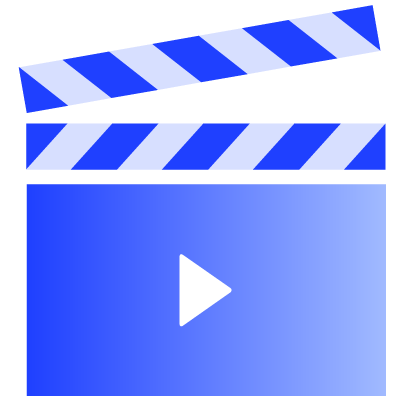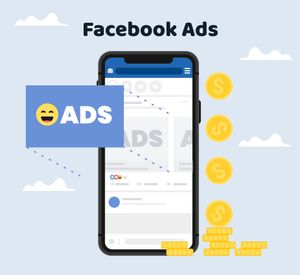Alfred Hitchcock once articulated the three fundamental prerequisites to create a great film. Here’s what he said:
“To make a great film you need three things: the script, the script, and the script”
Great sales videos, not too different from great films, perhaps require the same three things. In a way, every feature-length movie is trying to sell you something. A hero, a story, a situation, a town, an idea or, even an ideology at times. With a sales video, the object of sales is either a brand or a product. And there are many ways to make this sale.
If you find yourself stuck, struggling to speak on your live webinars or short-form sales videos, this blog post is for you. Video content is here to stay, and it’s best to soak in some best practices for the fundamentals of video production.
Scriptwriting is a necessary, extremely crucial part of video production.
Even a novice digital marketer can create quality, professional-looking sales video scripts through these simple steps. Let’s dive right in, shall we?
Step-by-Step: Writing a Video Script
Regardless of the type of video you are looking to produce, here is a stepwise guide for creating engaging, professional video scripts:
Immerse Yourself Into Research

Oddly enough, this is the most important step of video scriptwriting. Alert: you don’t do any scriptwriting in this step.
Before you even begin to write a video script, you need to have a solid enough base to work with. Lest, you create something ineffective and invaluable to the audience, and the industry you cater to. The more you know of what’s out there, the better you will be able to structure and conceptualize your own sales video.
Audience Research
You can’t create a video for an audience you don’t know. Only when you thoroughly know whom you are addressing will you be able to take the train to conversion central. Who exactly is your audience? Don’t just abstractly answer this question, take a deep dive into the data analysis of your audience.
Social media analytics, your ICP (ideal customer profile), website analytics, StoryXpress video analytics on your previously generated video content are a few simple ways to understand your audience. You can make use of tools like StoryXpress, Google Analytics, Consumer Barometer, and simpler tools like surveys, forums, Reddit, Twitter Advanced Search, LinkedIn Groups to get a good head start.
The idea is to explore every space on the internet that your ideal viewer would. And find out what interests them, what are the types of videos that they like to watch, and what’s the ideal platform to place these videos on. Not only do you have to thoroughly identify your target audience, but also understand them.
Market Research

Competitor analysis is as important as researching your target audience. And in fact, audience research always segues into market research. Now that you have identified a target audience, assuming a major chunk of these is not familiar with your business. What are they using instead of your product or service?
Identify your competitor, and go through their sales content. This is extremely important because both you and your competitor are fighting for the same spot (duh). It’s better you know what kind of videos your competitors are producing, not to imitate them, but to stand out from the crowd.
If a competitor is getting traction for a video, and reaching a larger chunk of your target audience positively. Then, you have a lot to learn from that video. Make note of the tone, the call-to-action buttons, the messaging, the video length, etc.
Make Notes and Define Your Goals

Throughout the research, consistently keep examples that you can revisit and bookmark stories that inspired you. Make notes based on the traction the videos deserve, the platforms that did well for your target audience, and the type of videos. Another important thing to observe is the placement of videos in your marketing funnel.
Now that you have the necessary background, you can think in terms of what you want to create. What does your sales video represent, what’s the kind of content that your audience is more likely to enjoy?
Subsequently, figure out where to place the video, the right platform can make a big difference in overall engagement and action. Remember, you don’t have to align your goals with competitors but with the audience at large. So, if you have any criticism of the competitors, make a note of that too. These will be the things you don't want to do.
You can consider a multitude of things when defining goals, depending upon your purpose. But generally, look at 3 things:
- Why am I producing this video?
- Where should this video be placed in my marketing funnel?
- What action should the viewer take after watching this video?
Once you answer these few questions, the rest just falls into place easily. With why, where, what out of the way, let’s look at the how:
Ideation, and the First Draft
Almost 30% of the work is done with the first step. And much of the rest will be covered in this step.
Ideation

Generating unique video ideas is not tough but can be frustrating if you lack direction. So, to get your thoughts aligned to your goals and create something of a masterpiece, take a breather after research. You can jump right into ideation if you have a good enough vision, but make sure not to imitate videos, or mix up too many subjects.
You can use free scriptwriting tools that will help you with ideation as well like Celtx, WriterDuet or professional writing and editing service. Even though during ideation you don’t put down structured dialogues, most of what you ideate will be used in the final script. So, it is best to make use of script writing tools that retain all your ideas and allow you to easily include them in the final script.
Go all out with ideation, no matter how big or small the scale of your video is. Just write down about everything you can think of. You can use the templates listed further down in this blog for inspiration and direction.
Once you have a few ideas, here are the 3 questions you can ask yourself to decide which one to choose:
- Will the target audience like this? (Important to answer this, lest, you forget)
- Can I implement this, technically?
- Do I have the budget for this?
Once an idea tick marks all of the above, we can move on to creating the first draft. If multiple ideas match the criteria, you can retain all the ideas for future videos. But use the one you came up with last.
First Draft
With the idea ready to go, create an outline.
Use a storyboard to visualize your video along with a few dialogues, or voicer, or even text. You can use tools like Celtx, Storyboarder. Both these platforms have an intuitive interface that will let you visualize every scene along with additional dialogues.
The first draft is a mish-mash of it all and serves as a guide for the final script. So, don’t be shy to include the dialogue that you are not too sure of, because the final editing is yet to be done. This draft doesn’t have to be perfect, it just needs to be good enough to start arranging equipment that you will need, informing any actors or presenters. In the production process, it's not unlike how lawyers might use legal document comparison software to analyze drafts and revisions of contracts or agreements. By leveraging such technology, just as filmmakers perfect their scripts, professionals in the legal field can ensure accuracy and efficiency in their workflow.
Here are a few things that your first draft should contain:
- The complete structure of your script
- Visual cues
- Rough sketch of dialogues
Edit and Finalize Your Video Script
If you have completed the first draft, congratulate yourself because you have done at least 60% of the work. In some cases, even 80%. What’s coming next is again, not exactly tough but it is intense and requires a sharp focus.
Edit
Only a keen eye knows how to perform a thorough edit and make the script rise a notch above. It is best to take a breather and look back at the notes you created during research before you perform the final edit.
Here are a few ways to begin the edit:
Focus on the time limit, and cut everything unnecessary. The thumb rule for sales videos is, keep it as long as required but as short as possible.
Format your script and restructure it to match cuts. Prepare the script such that anybody on the team can understand it, not just the writing team.
Make sure every subsection of the script is crisp, and the overall script is concise.
Add necessary CTA (call-to-action) sequences, and appropriately place them. Use keywords, if required.
Become aware of any possible controversial subjects in your script, and if not necessary to the script, remove these.
Keep in mind, you will have to go through at least 2 rounds of editing to establish a good, workable script. If at any time you feel lost in this process, it is best to take some time out. Because any errors here will decrease the overall quality of your video.
Finalize
The final thread is a solid proofread. Follow this up with feedback from the entire crew. Since in the previous step you have taken into account the technical implementation aspect of the script, now you just have to confirm it.
Make sure your entire crew is on the same page and that every sequence, every shot is clear to everyone.
Video Script Templates
Demo Videos (Promotional Videos)
This type of video works well in the early stages of the funnel, with a greater focus on the product and brand value. Here’s a rough idea of what a demo video looks like:
- Start with an outrageous fact or anything attention-grabbing (could be a visual). This is called a hook.
- State a problem.
- Agitate the user into believing the depth and horrors of this problem.
- Showcase your product as a solution.
- Reinstate what you offer no one else does by listing unique features, and facts to supplement it all.
- Close with a powerful CTA that compels action.
Bonus Read: How to Make Demo Videos That Convert and Drive Sales
Here's an example of a great demo video:
How-to Videos
These types of videos work almost at every stage of the funnel. Except for cold outreach. How-to videos are knowledge-intensive videos and require technology experts to create a wholesome script.
Here’s what a how-to video looks like:
- Start by stating a problem followed by a fact like “40% of all marketers struggle to rank..”.
- Give your audience the fundamentals of the topic in a minute or less.
- Get right into the solution, supplement the solution with CTAs.
- Screen record yourself solving the problem. Add annotations to your screen.
- Use as many visuals as possible, like graphs, charts.
- Close with a subtle CTA.
Bonus Read: Create How-to Videos to Educate and Engage Your Audience
Here's an example:
Testimonial Videos
More of the bottom of the funnel content, but testimonial videos surprisingly work well to convert hot leads on landing pages. These are your clientele or business partners explaining what a hoot you are to work with.
Here’s what a testimonial video looks like:
- Start with an abstract thought leadership quote like “The world is changing at a fast pace..”.
- Follow up with a visual of your client explaining how they found a solution supplementing the quote.
- As your client mentions your brand name, cut to a demo-video style screen recorded visual of how your produced functions. This is a good time to add a CTA.
- Show how you worked with this client through facts and figures.
- Ask the client to talk about the value additions and growth in addition to the facts.
- Finish with a powerful CTA.
Here's an example:
Video Script Writing: Best Practices
Keep It Concise
Unless you are planning webinars or live streams with an expert panel that provides value, avoid unnecessarily drifting off to different topics and addressing multiple subjects.
Keep your videos as concise as possible. Every type of video entails some amount of time, generally, 1 minute to 3 minutes is a good duration for consistent, unfaltering engagement. When you are constructing the video script, you can leverage the scriptwriting tools like Celtx, WriterDuet to maintain the desired duration.
The idea is to keep the bounce rate to a minimum, even if you are creating long-form content keep it engaging if not short. One way to do this is to use imagery, or graphics as much as possible. Especially for webinars, and longer tutorials use tools like the StoryXpress Screen Recorder to record the screen along with webcam video.
Have a table read
As a part of the scripting process it is necessary to have a table read, there are occasions when the written word sounds great but when spoken the same doesn’t sound as expected. The table read can also be used as a dry run opportunity to see how the script flows and also make improvements to improve clarity.
Visual storytelling

Videos aren't supposed to be just a talking face. There is so much room for experimentation with videos, and unless the topic in itself is sensational, use visual elements to spice up things.
For sales videos adding relevant graphs, metrics, visual explanation of complex concepts through drawings, animations, whiteboards are all must-haves. You can leverage tools like the StoryXpress Screen Recorder to capture your product in action. This is extremely important for how-to videos.
When writing scripts, you can include two columns, one for dialogues and text, another for visuals.
Add CTAs
Whenever you are writing a script for a sales video, make a note of any possible leeways for CTAs or call-to-action and write these into your script. Call-to-action buttons can be displayed on your video, but they do need to be supplemented by the script.
A call-to-action flying out of nowhere is extremely annoying for the viewer. Especially in a more knowledge-based setting when the viewer has clicked on the video for value. Find spaces within the story to plug in your product, and do it in a way that doesn’t deviate from the course of the script.
You can add call-to-action buttons like “Book A Meeting Now” or “Register for this Exclusive Webinar” and many more. Get creative with the call-to-action statements.
Keep the Tone Conversational

In the B2B climate, where meetings are painstakingly formal at times, creating conversational video content is refreshing for everybody. The people behind their designations want to watch videos that connect with the human in them.
The script should be written in such a way that the presenter talks to the audience. Like they would talk to them if they met them at an event. Keep it personal, more accessible. And especially, if you are explaining complex functionalities, keep it as simple as possible.
Use catchphrases, industry jargon, terms that your audience will relate to. Charge up your audience with encouraging statements, and keep the tone friendly.
Grab and Retain the Attention
In scriptwriting, there is a concept of a “hook”.
The hook serves as an anchor for the viewer to latch onto and watch the entire video. Always include elements of engagement like a hook to captivate the audience. Your hook should come within the first 10 seconds of the video.
Use outrageous statements, or shocking facts to begin the video. It could even be a value proposition from your product that is just too good to miss out on. But keep the script thoroughly engaging. Add elements of excitement, and balance these out with visuals and facts.
That’s our extensive guide on scriptwriting for videos. You can create professional sales videos in seconds using our Screen Recorder.
When it comes to storytelling through videos, scripts are of utmost importance. A well-written script becomes a guiding light during video production, and it should contain everything you can do during post-production as well. Including any previously decided edits, or visual graphics.
If you are still deciding what kind of video you want to create for your business, this guide might help.
FAQs
Q: How to write a script for a video ?
Follow this 6 steps to create a script for a video
- Define the purpose of the video :
- Who is your target audience?
- What do you want to achieve with the video?
- Do you want to inform, educate, persuade, or entertain your audience?
- Is there a specific action you want your audience to take after watching the video?
2. Outline your ideas : Start by brainstorming a list of key points and information you want to include in your video. Consider using an content outline to organize these points and arrange them in a logical order you will be using them in your video
3. Write a script : Once you have your outline, start writing your script. Use a clear, concise writing style and avoid using jargon or technical terms that your audience may not understand. You can use them if your video is intended for viewers who are familiar with these terms.
4. Include visual elements. A video is not just about the audio, so make sure to include descriptions of any visual elements you want to include, such as graphics, animations, or images.
5. Practice and revise the script you have written.
6.Get feedback. Consider sharing your script with others for feedback.
By following these steps, you can create a clear and effective script for your video.
Q: How to write a script for a short video ?
Writing a script for a short video can be a helpful way to organize your ideas and make sure you include all the important information you want to convey. Here are some steps to help you get started
- Decide the purpose of your video.
- Identify your key message.
- Outline your ideas that you want to use in script
- Write a script.
- Include visual elements like images, animations
- Practice and revise the script
- Get feedback on your script
Q: How to write a video script for corporate video ?
To write a video script for a corporate video, follow these steps:
- Determine the purpose of your video and identify your key message.
- Outline your ideas and write a script using a clear, concise writing style.
- Include visual elements and practice and revise your script.
- Get feedback and tailor your script to fit the specific needs and goals of your video.
Here is an example of a script for a corporate video for a real estate company:
[Title page]
[Introduction]
Welcome to XYZ Real Estate, where we specialize in helping our clients find their dream home. Our team of experienced agents is dedicated to providing top-notch service and making the home buying process as smooth and stress-free as possible.
[Body]
[Visual element: footage of agents working with clients]
[Voiceover]
At XYZ Real Estate, we understand that buying a home is more than just a financial decision. It's a personal one, and we are here to guide you every step of the way. From finding the perfect property to negotiating the best deal, our agents have the expertise and resources to help you achieve your goals.
[Visual element: montage of properties for sale]
[Voiceover]
We also offer a wide range of services for homeowners looking to sell their property. From professional photography to targeted marketing campaigns, we will work with you to get the best possible price for your home.
[Conclusion]
Thank you for choosing XYZ Real Estate. We look forward to helping you with all of your real estate needs.
[Credits]
[Call to action]
Contact us today to learn more about how we can help you buy or sell a home.
Q: How to write a promotional video script ?
To write a script for a promotional video, follow these steps:
- Determine the purpose of your video and identify your key message.
- Outline your ideas and write a script using a clear, concise writing style.
- Include visual elements and practice and revise your script.
- Get feedback and tailor your script to fit the specific needs and goals of your video.
Here is an example of a script for a promotional video for a B2B SaaS project management software:
[Title page]
[Introduction]
Are you tired of using multiple, disconnected tools to manage your projects? Introducing ProjectMaster, the all-in-one project management software for businesses.
[Body]
With ProjectMaster, you can easily create and assign tasks, track progress, and collaborate with your team in one central location. Our intuitive interface and powerful features make project management a breeze, so you can focus on what matters most: getting work done.
[Visual element: demo of ProjectMaster interface]
[Voiceover]
ProjectMaster also integrates with your favorite tools, like Google Drive and Slack, so you can stay connected and stay productive. Plus, with our advanced reporting and analytics, you can get real-time insights into the health of your projects.
[Visual element: screenshot of advanced reporting and analytics]
[Conclusion]
Say goodbye to the headache of managing multiple tools and hello to streamlined, efficient project management with ProjectMaster. Sign up for a free trial today and see how ProjectMaster can transform the way you work.
[Credits]
[Call to action]
Sign up for a free trial at [website] today!


 Free Screen Recorder for Chrome
Free Screen Recorder for Chrome














